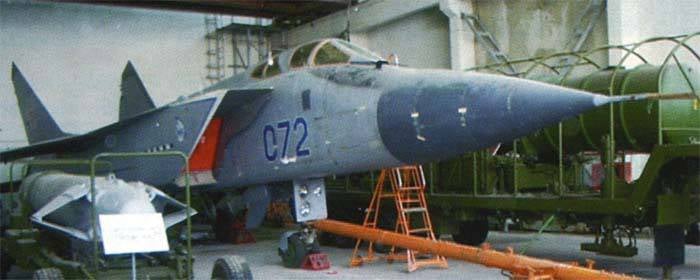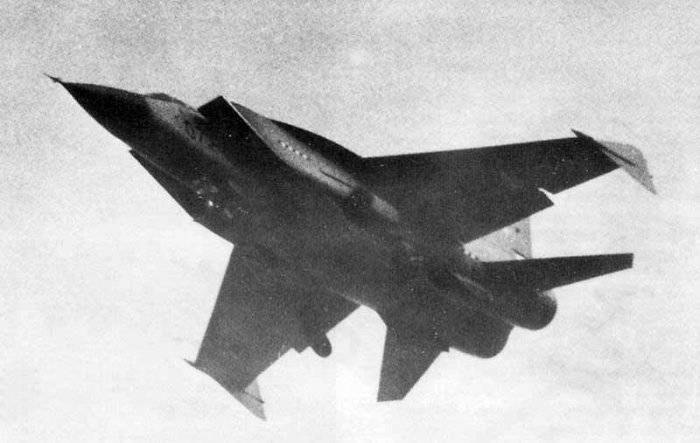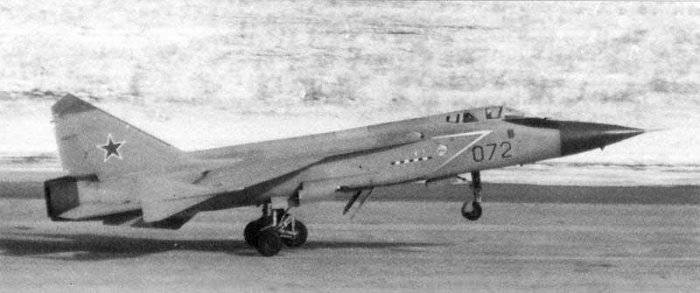MiG-31D - airborne anti-satellite missile program
Since 1978, the Vympel Design Bureau has developed an anti-satellite missile equipped with an OBCH, which can be launched from a MiG-31 aircraft. The defeat of the target was probably carried out according to this scheme: the rocket was output to a predetermined height and undermining of the warhead.
In 1986, the MiG Design Bureau began refining two MiG-31 fighters for a different armament. Such a modified aircraft received the designation MiG-31D (there is also a designation MiG-31A) ("product 07"). The product was to carry one large specialized missile, and the weapons control system was completely redone for it. The recesses under the R-33 were sealed. Both prototypes did not have a radar (instead of it there was a 200-kg weight model), the radio-transparent nose cone was replaced with an all-metal one, the niches of the AKU units for the R-33 UR were sewn up by installing a central retractable pylon for the "product". The planes were single.
The MiG-31D was equipped with surges like on the MiG-31М and large triangular planes at the ends of the wing ("flippers"), similar to those on the prototype MiG-25П. "Fins" served to increase stability in flight when suspended on the outer pylon of a large rocket. The planes received their 071 and 072 tail numbers.
The refinement was completed in 1987, and in the same year, board No. 072, the carrier of an anti-satellite missile, entered flight tests by pilots of the Design Bureau in Zhukovsky. The first flight and testing was carried out by A.G. Fastovets. The test program continued for several years, but was suspended in the early 90s due to an unclear situation with the advent of a new rocket.
As Russian officials reported in 1992, in the future, testing of this system is quite possible. In August of the same year, a photograph of the MiG-31 interceptor fighter with an anti-satellite missile under the fuselage was published for the first time in Aviation Week and Space Technology magazine.
Currently, machines #071 and #072 are in Kazakhstan, possibly at the “A” range.

According to the Deputy General Designer of the OKB im. Mikoyan A. Belosvet, since 1997 it began to develop a system for launching space aircraft into near-Earth orbits using a converted MiG-31 interceptor. The experience gained by the Design Bureau as a result of experiments on the creation of the MiG-31D anti-satellite fighter will be the basis. A commercial launch vehicle RN-S with a carrying capacity of 40-200 kg will be launched from a flying launcher - a MiG-31D fighter flying at an altitude of about 17000 m at a speed of 3000 km / h. It should be developed by the Vympel Design Bureau, which specializes in the creation of air-to-air missiles. The first experimental launch of this launch vehicle was expected in 1999-2000.
According to some reports, the Burlak carrier based on the Tu-160 bomber was developed on the basis of an anti-satellite missile.


Information